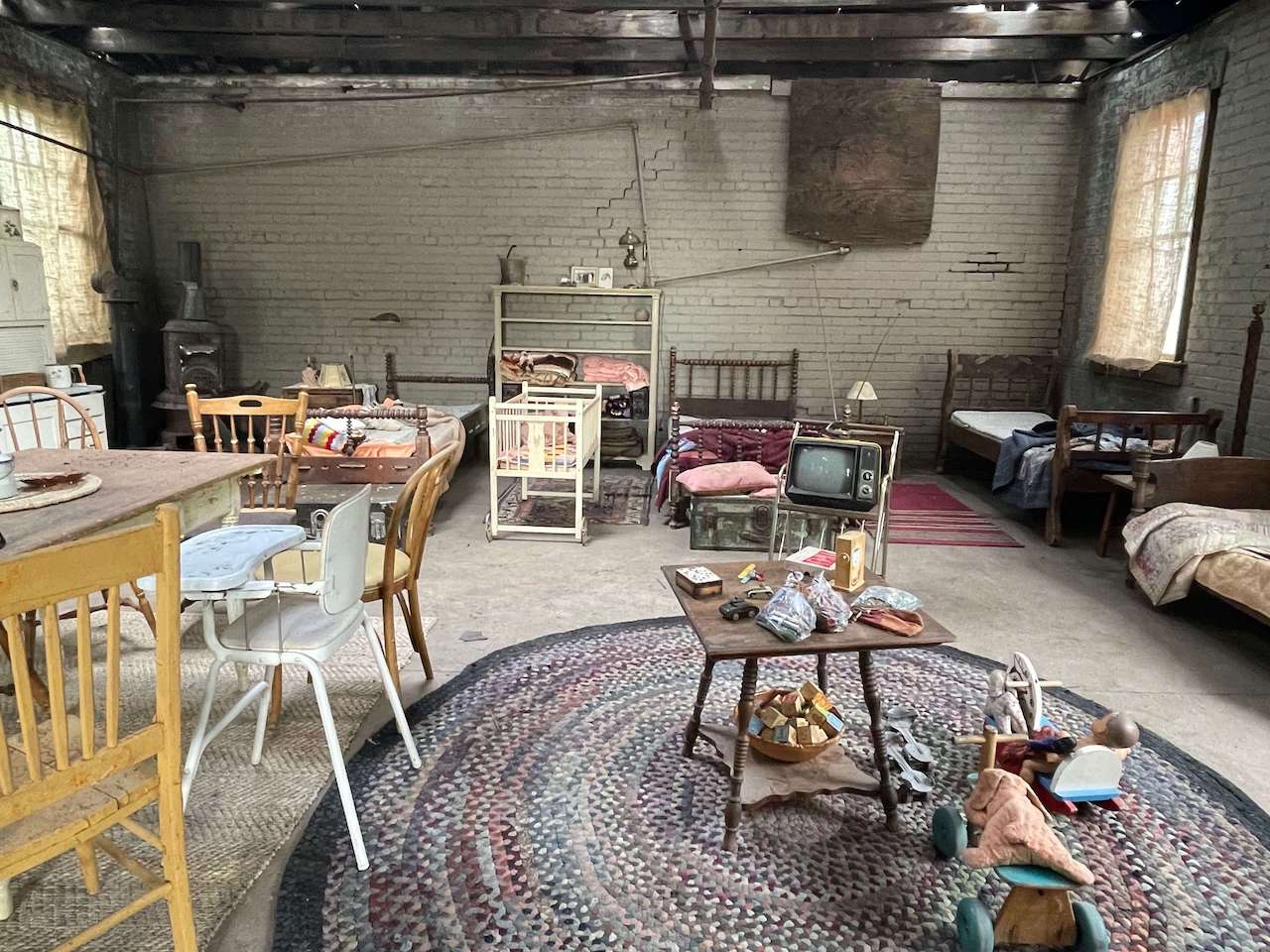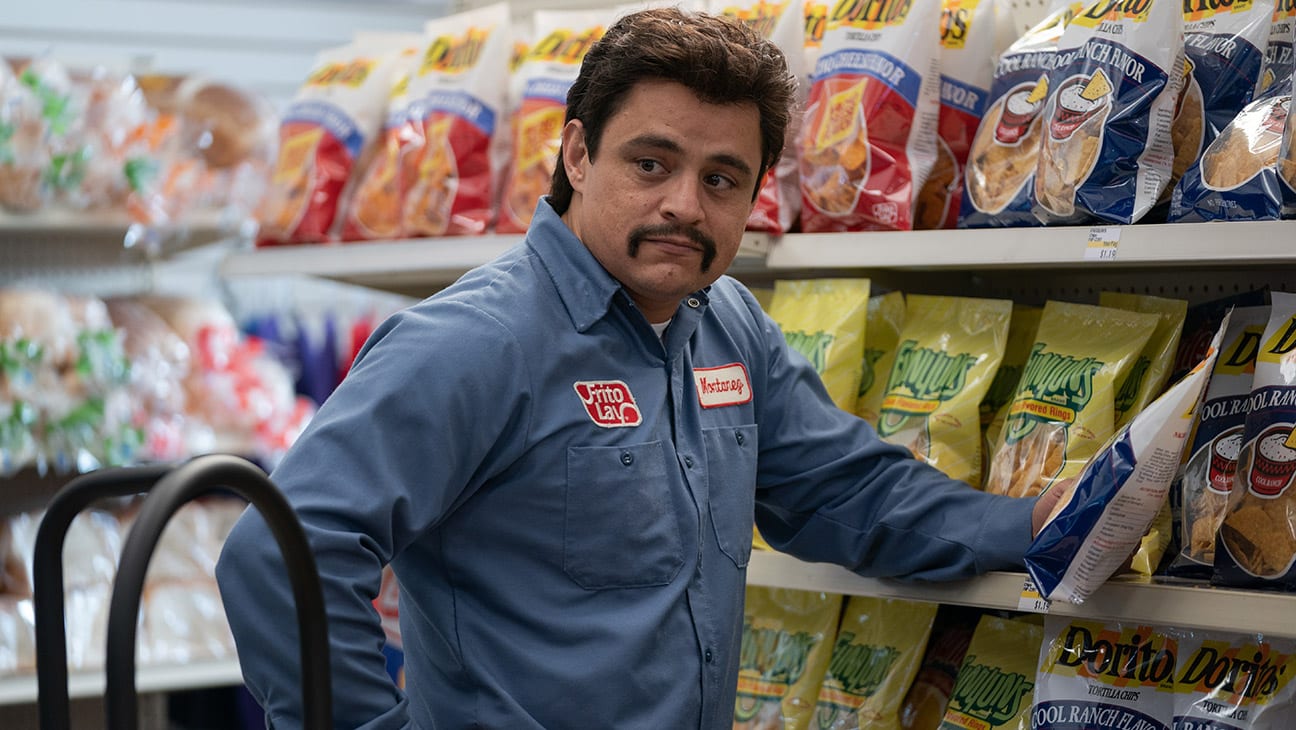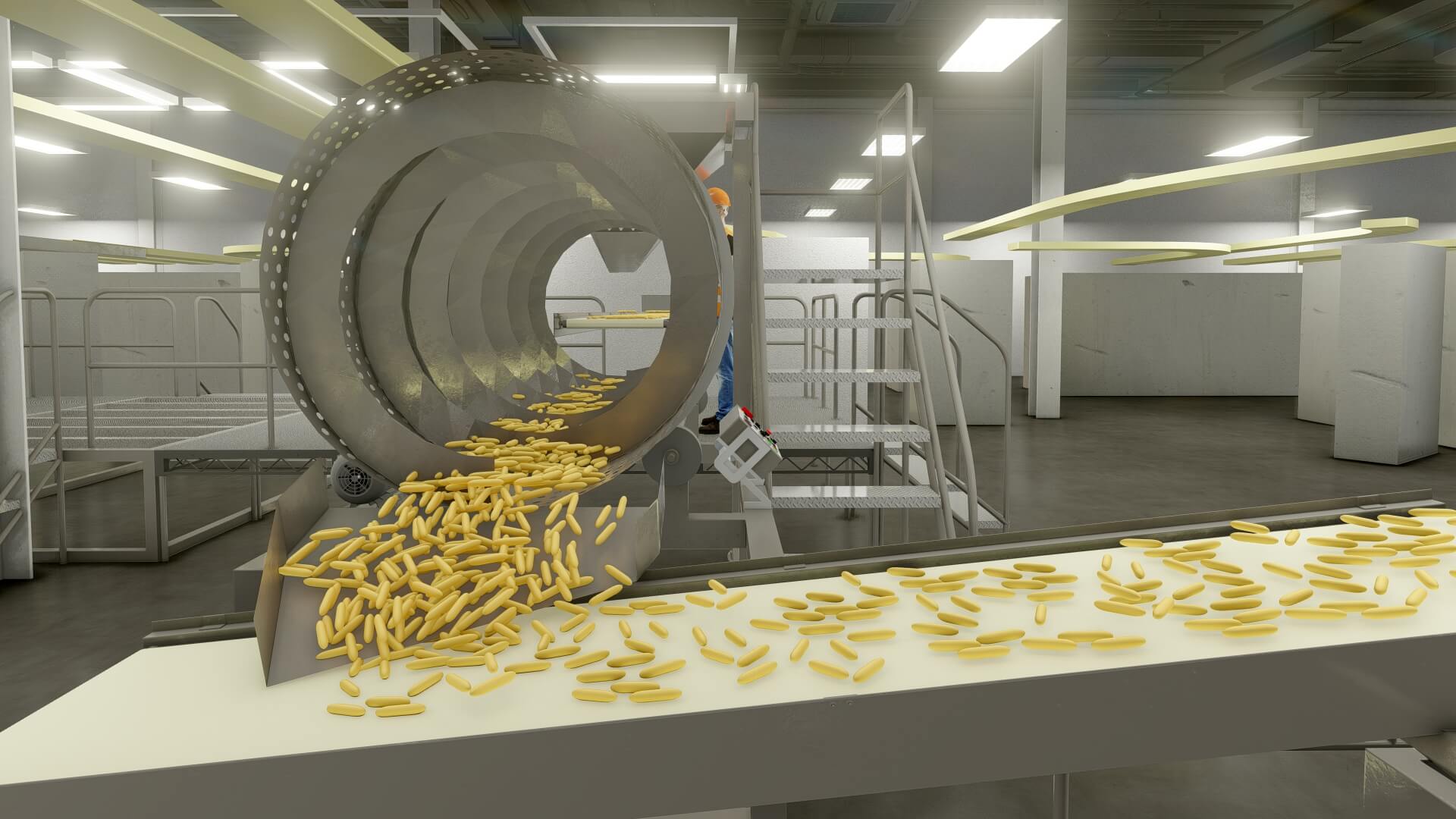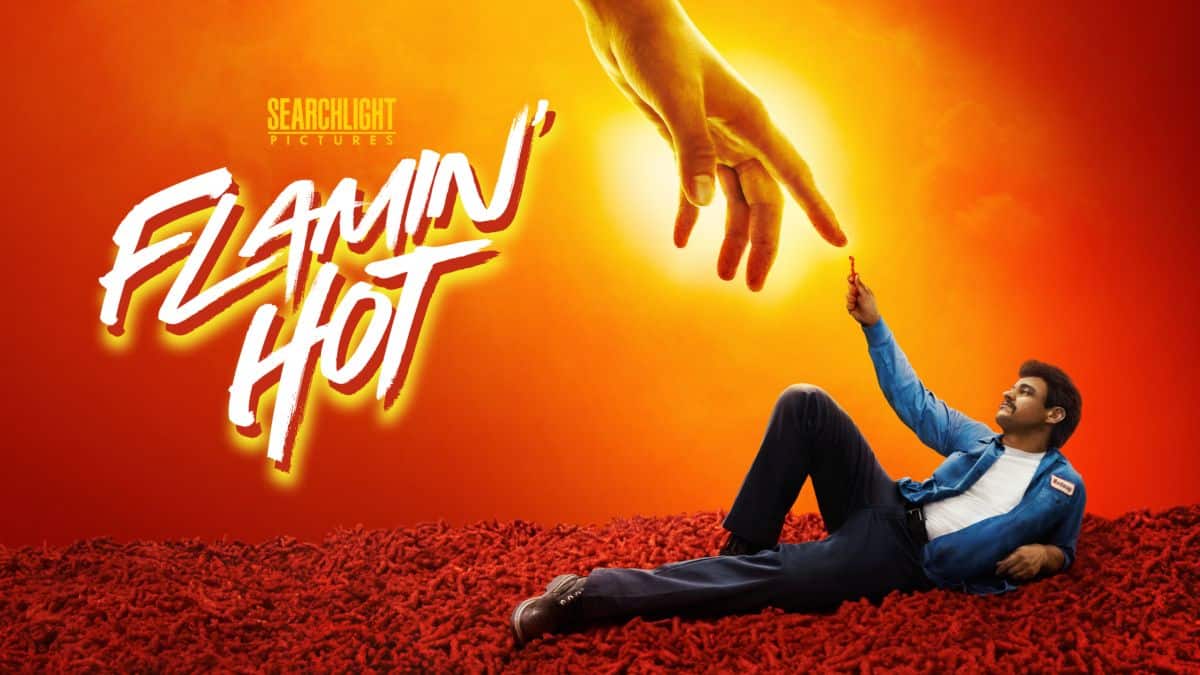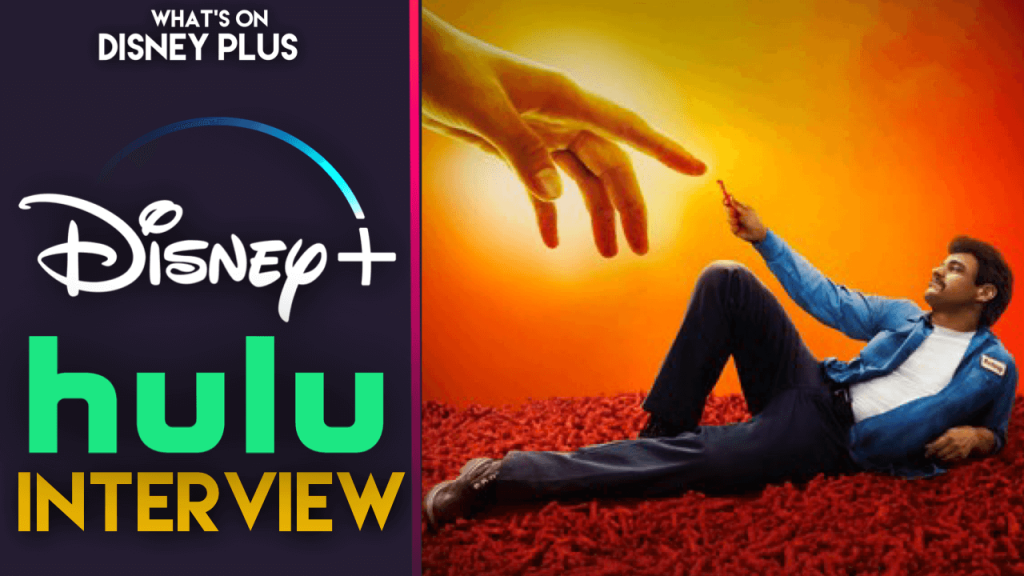
‘Flamin’ Hot’ | Cabot McMullen and Brandon Mendez | Exclusive Interview
Earlier this month, Disney released “Flamin’ Hot” on Dinsey+ and Hulu, the film has been directed by Eva Longoria, and tells the true story of Richard Montañez’s incredible journey from working as a janitor at a Frito Lay plant to creating the massive success of Flamin’ Hot Cheetos.
Recently I got to speak with Cabot McMullen and Brandon Mendez, who were the production designers for the film, which saw them work on over 100 sets to bring this film to life. Since the movie spans four decades going from the 60s through the 90s, they had to be very strategic when conceptualizing and designing the sets to maintain period accuracy. They played with color shifts using a 60s and 70s color palette of oranges, greens, olives, and wood tones to keep that retro look. For the 80s period theme, they used the classic mauve wood color that was very popular during that time. They also had to flip some of the film’s locations up to four times due to the movie’s quick pace.
The factory where the Flamin‘ Hot chips were produced was one of the key sets they designed. They used a warmer color palette outside of the factory to contrast with the colder, more sterile feel inside the factory. The goal was to separate work from home by adding fewer patterns and more steel. The duo also created Frito-Lay products from all periods shown in the film, with coordinated branding, signage on the walls, patches on the workers’ wardrobe, and documents on the desk to signal which decade and product Frito-Lay was working on.
How did you come up with the overall look of the film?
Brandon Mendez: Eva had a really strong opinion on the way that we were going to tell this story and dictating it through the eras. It’s sixties, seventies, eighties, nineties is where we finished off the film. For us it was really just getting it right, inappropriate to Hispanic Chicano culture and then showcasing that throughout the film and getting into the factory. From the factory, we ended up kind of getting that, establishing that look, as well. I’ll let you take that Cabot.
Cabot McMullen: Yeah, research and more research. The anecdote we like to tell is that we couldn’t find any accurate research on the Frito-Lay factory because it was basically industrial secrets and Frito-Lay didn’t want any of their processes out into the world. We stumbled on a YouTube that was made by a sixth grader on a class trip who somehow got through security and photographed everything, videoed everything. We took her film as our main piece of research. We dug in deep to every nook and cranny about the culture, about the world that we were entering in and the periods, too. Brandon gathered a lot of really, really valuable research on the Chicano culture from the forties through the eighties and we really did our research so that we got it right.
How important was colour to the look of the film?
Brandon Mendez: Yeah, we made a pretty good plan here to showcase different colors and something we wanted to do is show a warmer palette when we were outside of the factory. When we got into the factory it was something where we would show it a little more sterile and cooler palette per se when you get into there. As you know, when you’re watching the film, the pacing is pretty quick, so you tend to go from factory to house, factory home life back and forth. One thing we played throughout that was getting a warm tone so you felt like you were in his world and then when you got into the factory it was like this cooler world that was unfamiliar to him. That was one way that we played with that.
Cabot McMullen: Each character had their own color story in each period, as well. We worked with Federico Cantini, our cinematographer, very closely on color temperatures with all the practical lighting. As Brandon mentioned, as you get into the factory, suddenly you’re in a halogen world and everything’s much more antiseptic. Eva had a really great idea that was super strategic to the color story where the color of the Flamin’ Hot Cheeto, that bright red wouldn’t be revealed until it came off assembly line for the first time. There were a lot of strategic color choices like that and the way we delivered them.
What was the biggest challenge in creating “Flamin’ Hot”?
Brandon Mendez: I think one of the biggest challenges was us getting the factory right. As Cabot touched on earlier, we didn’t have any proper research to get done what needed to get done. As far as us finding stuff, we really relied on videos that were taken within the factory to replicate this machinery. I felt like a lot of the time, because we were playing this in the eighties, nineties where we had to create this stuff, because nowadays it’s all this modern machinery in the way that the factories run. It wasn’t something where we could buy the machinery, it was something that we had to make and replicate from a certain era.
I found that to be quite difficult. Also, there was a good amount of scenes in the film that we… I think 108 sets or something of that nature and we had to really buckle down and everything was period, so everything needed to be touched. Didn’t matter if you showed a corner of a street, it was like if that’s a modern element in that street corner, that needed to be removed and replaced. Play that out through the entirety of the film, and you get busy.Cabot McMullen: Yeah, I would agree with all that. Then also we had one location in particular that was a real challenge. If you read the script, there are three different markets scripted from different periods and because of scheduling we had to collapse them all into one location. Just in terms of the creative choices that were made as well as the scheduling and the turnarounds to flip these markets into other markets, that was, I think, really the biggest friction point for us on the movie.
Cabot McMullen: We had other challenges. We were shooting in the middle of monsoon season, so most every afternoon we would get these tremendous electrical storms and everything had to shut down. The schedule started to get impacted that way and we had to make a lot of pivots.
Brandon Mendez: We would see it happening from the office, we’d see the storm, we’d know where they’re shooting. Our office had this viewpoint of Albuquerque, so we would see the storm coming in and we’re like, “They’re shooting over there. The storm is coming.” We could see it. We could see the storm rolling in over the mountains. It was interesting.
How did it feel when you found out “Flamin’ Hot” was the most-watched streaming debut for Searchlight?
Cabot McMullen: Fantastic. Having Bob Iger at our premiere was really special. No, it’s kind of a dream come true. This has been, for us, two years since we wrapped. I think for Eva it’s been easily three plus years and for DeVon Franklin, I think it’s been nine years or something. To have all this, we all set out to make a great movie. Sometimes we’re not so lucky, but to have it so well received is just, it’s the cherry on top. It’s really great.
I agree with everything Cabot said it, you always set out to make a good movie and sometimes you fall flat. But I felt like this, it’s hitting the mark and I think it shows sometimes you just want to have a feel good movie. I think right now I notice a lot and I find myself watching these really dark films all the time, which I enjoy. But this is just a really feel good movie that you can sit back and watch with your family. I think it kind of shows that sometimes we want the feel good story of someone and rags to riches and those stories always pay dividends, I feel. It’s showing now.
Cabot McMullen: But it also validates what Eva and DeVon and everyone have been saying all along is that there’s a huge audience for this, an untapped audience whose voices need to be heard. This just proves it out. It’s for real.
Brandon Mendez: Yeah, I went to a predominantly Hispanic school and I was getting texts from friends like, “Oh my god, it’s such a good movie, such a good movie, such a good movie.” People are blowing me up on Facebook and Instagram and people are texting me who I haven’t talked to or spoke to in years, but they were like, “Oh, I sat down with my kids, this was great.” I think it was a very relatable story, and that’s something that they were setting out to do. I feel like it’s doing it, so it’s really good
“Flamin’ Hot” is available to stream now on Disney+ and Hulu.

